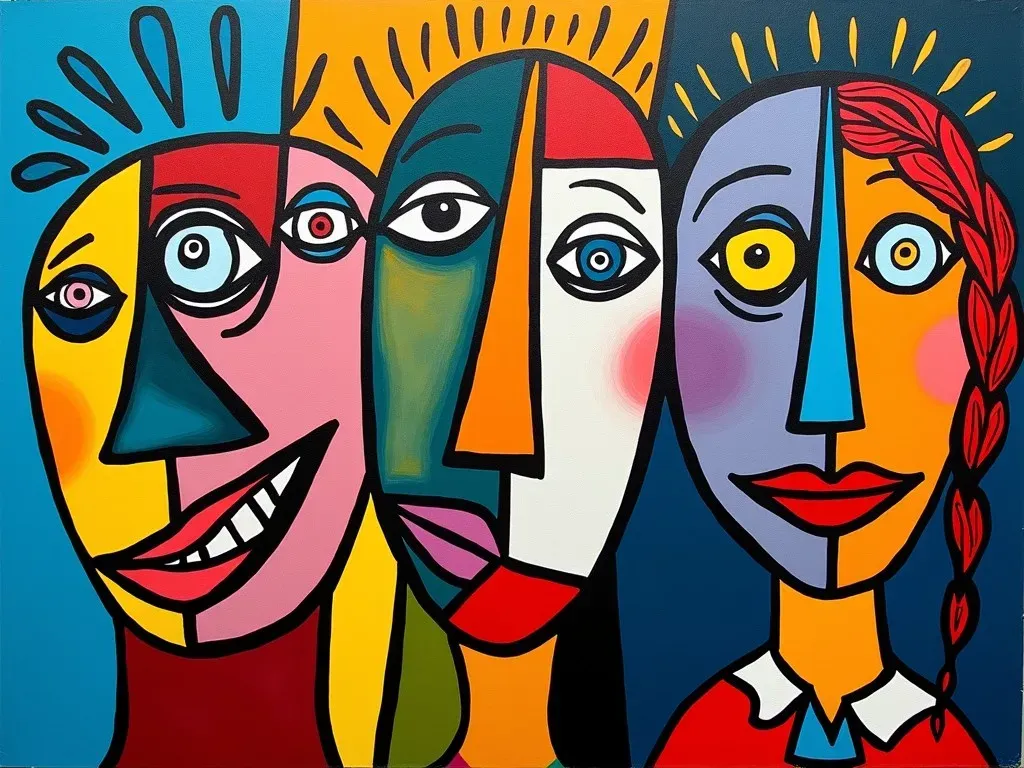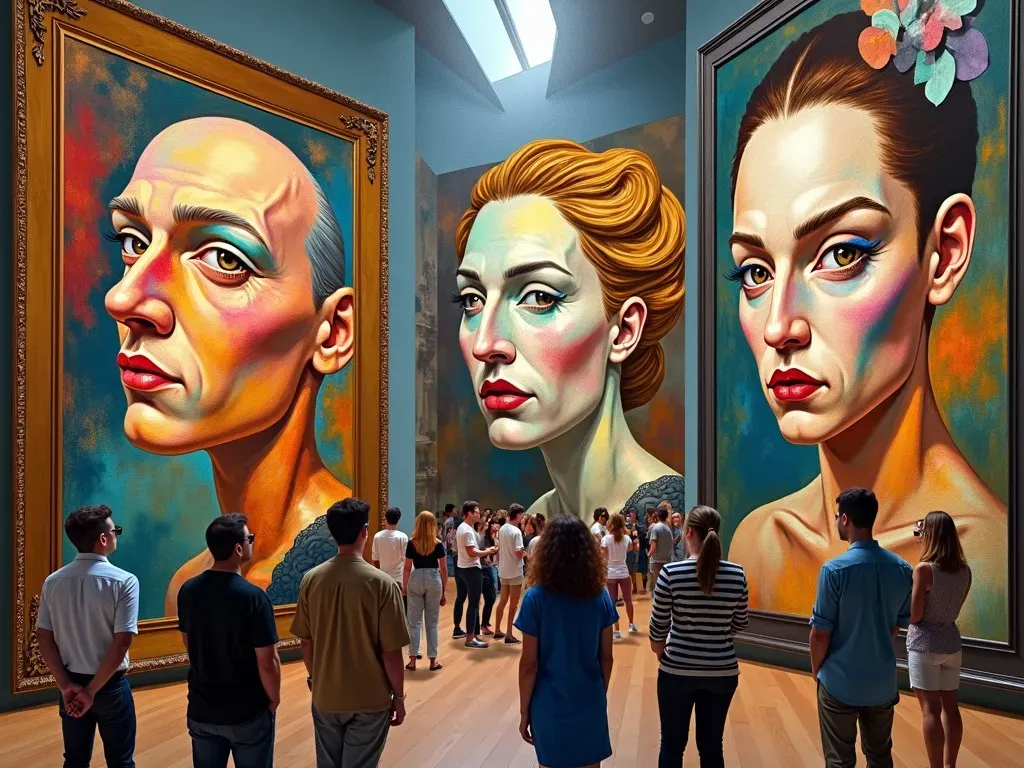Pablo Picasso, one of the most significant artists of the 20th century, is renowned for his innovative and influential contributions to abstract art. His diverse creations include some of the most famous abstract art faces that have captivated audiences worldwide. Picasso’s abstract portraits not only challenged traditional artistic norms but also transformed the way we perceive and interpret art itself. This article explores his most iconic works, particularly focusing on Picasso’s famous abstract art faces.
The Evolution of Picasso’s Art
Pablo Picasso’s artistic journey began in the late 19th century and spanned several styles, including the Blue Period, Rose Period, and Cubism. His exploration of abstraction, particularly in face painting, is noteworthy and reflects his desire for artistic innovation. The transformation from realistic depictions to abstract representations paved the way for modern art.
Notable Art Periods
| Period | Dates | Characteristics |
|---|---|---|
| Blue Period | 1901-1904 | Use of blue tones, themes of melancholy |
| Rose Period | 1904-1906 | Warmer colors, circus themes |
| African Art (Proto-Cubism) | 1906-1909 | Influence from African masks and art |
| Cubism | 1909-1919 | Geometric shapes, fragmented forms |
| Surrealism | 1920-1930s | Emphasis on dream-like qualities and emotions |
Picasso’s Abstract Faces Explained
Picasso’s style, particularly in his famous abstract art faces, features a unique amalgamation of geometric shapes and bold colors. His abstract portraits challenge perceptions by presenting multiple viewpoints of a subject within a single frame, a hallmark of Cubism. This innovative approach not only reflects the complexity of human emotions but also engages the viewer in a dialogue about identity and perception.

Famous Abstract Art Faces by Picasso
1. Les Demoiselles d’Avignon (1907)
One of Picasso’s most pivotal works, this piece depicts five women in a brothel, presenting distorted, angular forms and masks influenced by African art. This painting represents a significant departure from traditional representation and the beginnings of Cubism.
2. Guernica (1937)
Though not a face painting in the conventional sense, Guernica’s abstract figures represent the horrors of war, showcasing distorted faces filled with agony and despair. This iconic mural remains one of Picasso’s most powerful anti-war messages.
3. Portrait of Dora Maar (1937)
This painting features Picasso’s lover Dora Maar. The abstract composition incorporates sharp angles and fragmented features reflecting Picasso’s emotional turmoil and deep connection to the subject, showcasing his legendary abstraction in portraiture.
4. Weeping Woman (1937)
Another powerful piece related to Guernica, this painting uses distorted features to convey sorrow and anguish. The Weeping Woman exemplifies how Picasso used abstraction to explore complex emotions tied to personal and political themes.
5. Woman with Straw Hat (1936)
This work showcases Picasso’s ability to combine abstraction with vibrant color, depicting a woman’s face through disjointed features and chaotic brushwork. It provides insight into his innovative approaches to portraiture, revealing both beauty and turmoil.
Frequently Asked Questions
How did Picasso’s style influence modern art?
Picasso’s abstraction Techniques laid the groundwork for many modern art movements. His use of geometric shapes, innovative perspectives, and emotional depth inspired countless artists and redefined the boundaries of artistic expression.
What themes are prevalent in Picasso’s abstract art?
Common themes in Picasso’s abstract art include identity, emotion, and social commentary. He often explored personal relationships, the human condition, and the impact of war on society through distorted, abstract forms.
How did Picasso create his abstract faces?
Picasso often began with sketches that emphasized basic shapes and forms, then layered colors and textures to create depth. His process involved a willingness to experiment, deconstructing faces into geometric components before reassembling them in new, thought-provoking ways.
Where can I view Picasso’s famous artworks?
Many of Picasso’s masterpieces are housed in major art institutions around the world. The Metropolitan Museum of Art and Museum of Modern Art in New York, the Musée Picasso in Paris, and the Museo Picasso Málaga are prominent venues showcasing his work. For more information on Picasso’s art, visit Metropolitan Museum.

How has Picasso’s face art been received across different cultures?
Picasso’s abstract face art has received widespread acclaim and has been subject to various interpretations across cultures. While some view his works as revolutionary and poignant, others critique them for their departure from traditional beauty. Regardless of individual perspectives, his influence remains profound globally.
What role did Cubism play in Picasso’s face paintings?
Cubism was pivotal in Picasso’s artistic evolution, as it encouraged him to view subjects from multiple angles simultaneously. This approach allowed him to capture not just the physical aspect of faces but also the emotional and psychological dimensions, leading to more complex representations.
Are there any myths surrounding Picasso’s abstract art?
A common myth is that Picasso’s art lacks emotion due to its abstract nature. In contrast, many of his abstract faces are deeply personal and laden with meaning, reflecting the artist’s inner struggles and broader societal issues.
To explore more about Pablo Picasso and his contributions to art, visit Wikipedia.
In summary, Picasso’s abstract art faces are a testament to his genius, reflecting both personal and universal themes through innovative techniques. His work not only transformed the art world but also continues to influence contemporary artists today.
